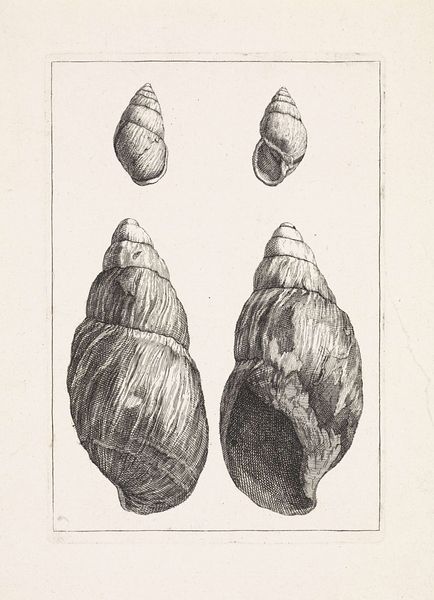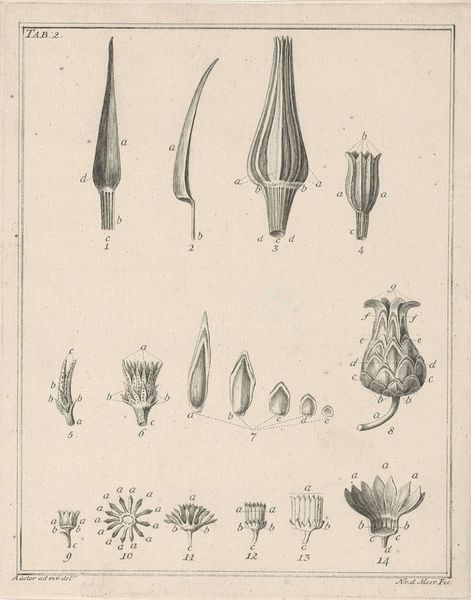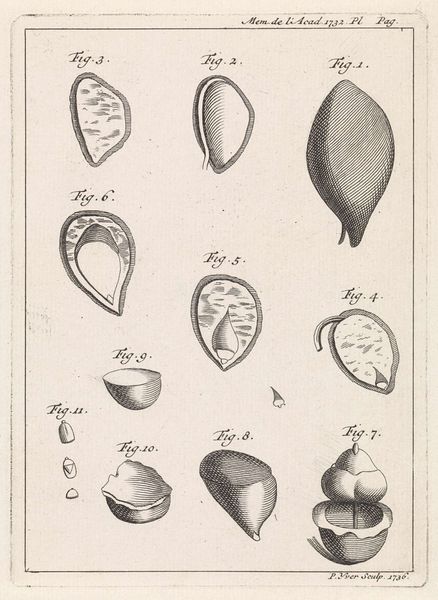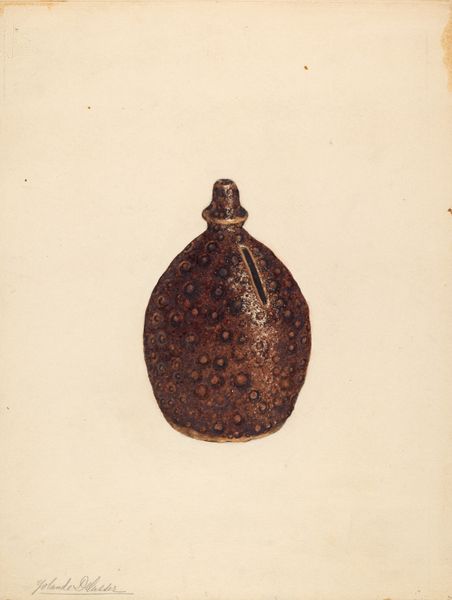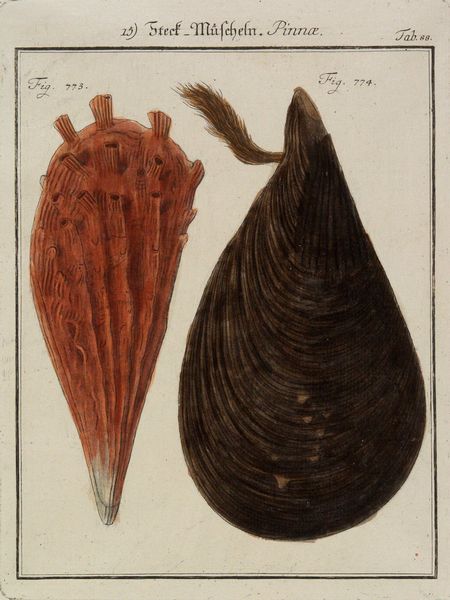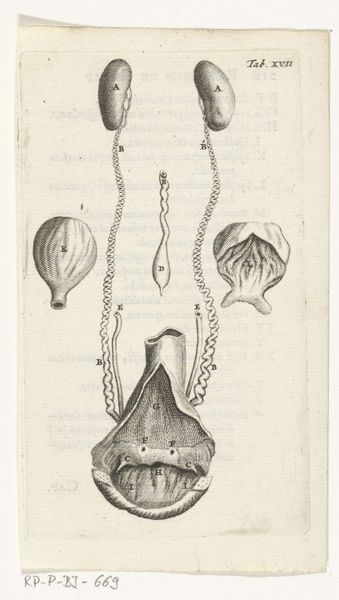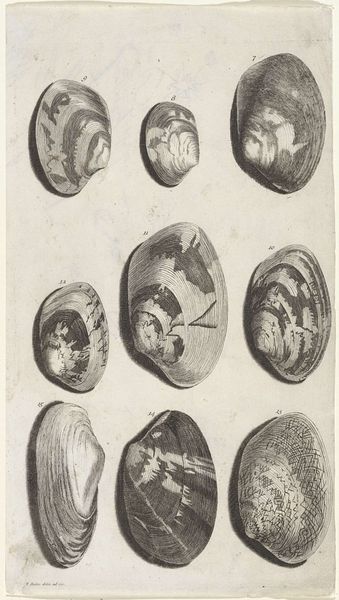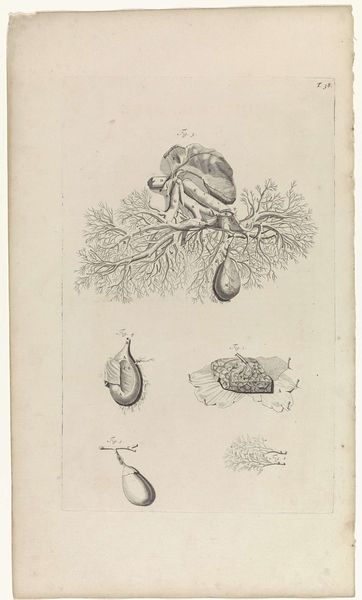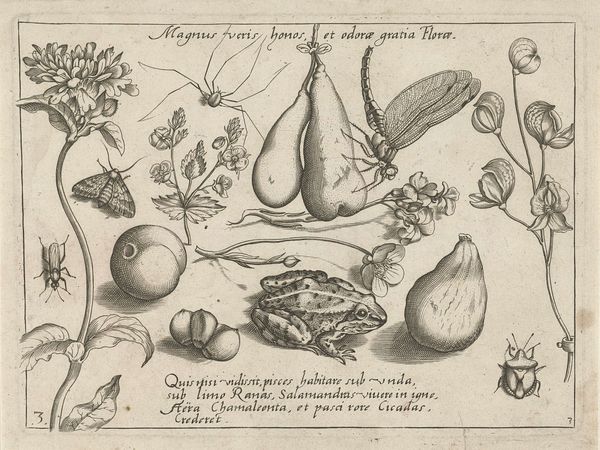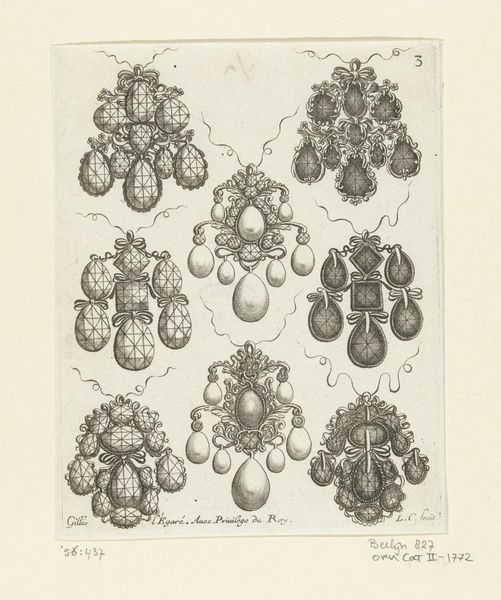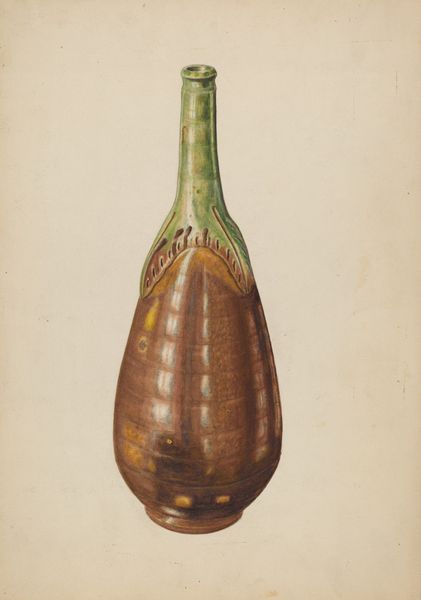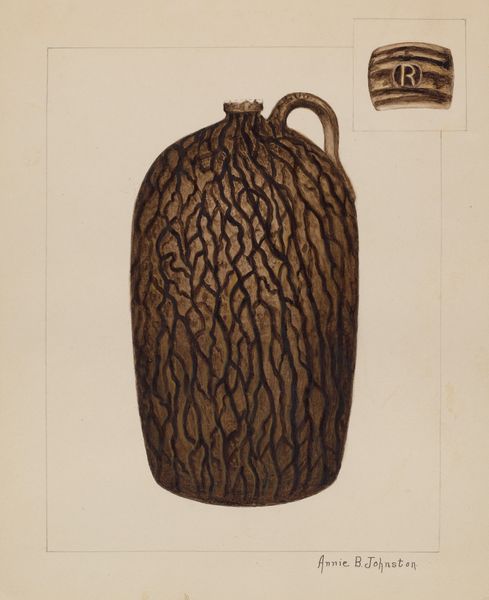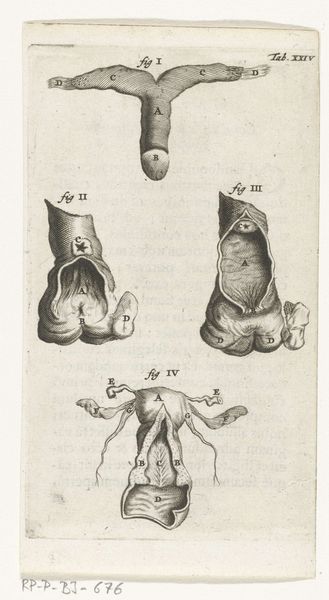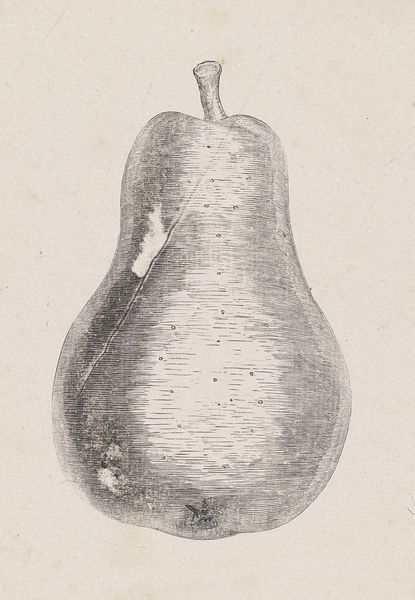
print, engraving
# print
#
old engraving style
#
line
#
academic-art
#
engraving
#
realism
Dimensions: height 150 mm, width 127 mm
Copyright: Rijks Museum: Open Domain
Editor: Here we have Pieter Yver’s "Plantenzaad," an engraving from 1736 currently residing in the Rijksmuseum. What strikes me is how this botanical study, typically confined to the realm of science, has been rendered with such deliberate artistry through printmaking. What's your take on this piece? Curator: Well, let’s think about the print itself, the means of production. The creation of an engraving in 1736 was a highly skilled labor, a testament to specialized artisanal knowledge. How does that manual labor intersect with the supposed objectivity of scientific illustration? The image purports to depict "Plantenzaad" with accuracy, yet it’s filtered through a very specific process, and the hand of the engraver, shaping and defining these seeds. Editor: I see what you mean. So, the printmaking process itself becomes part of the subject matter? Curator: Exactly! Consider, too, the purpose of such an image. Who was the intended consumer? These prints were not mass-produced in our contemporary understanding. The choice of engraving itself signals a level of sophistication, suggesting a wealthy patron or scholarly audience. Does this imply a connection to emerging scientific communities eager for detailed botanical documentation, or the leisurely consumption of scientific knowledge by an educated elite? Editor: That’s fascinating, I hadn't considered the audience's role in shaping the artwork. The engraving's detail suggests it was meant to be closely studied, not just admired. Curator: Precisely. It encourages us to question the relationship between artistic creation and scientific pursuit, where the "hand-made" nature and cultural circulation of the engraving actively constitute knowledge production. What does focusing on material and labour reveal to us that aesthetics alone could not? Editor: I realize I was viewing this simply as an image, when it’s also an artifact with its own production and consumption history. Thank you for revealing this interplay! Curator: The value lies precisely in that interplay – revealing how art both reflected and shaped its social and material environment.
Comments
No comments
Be the first to comment and join the conversation on the ultimate creative platform.
